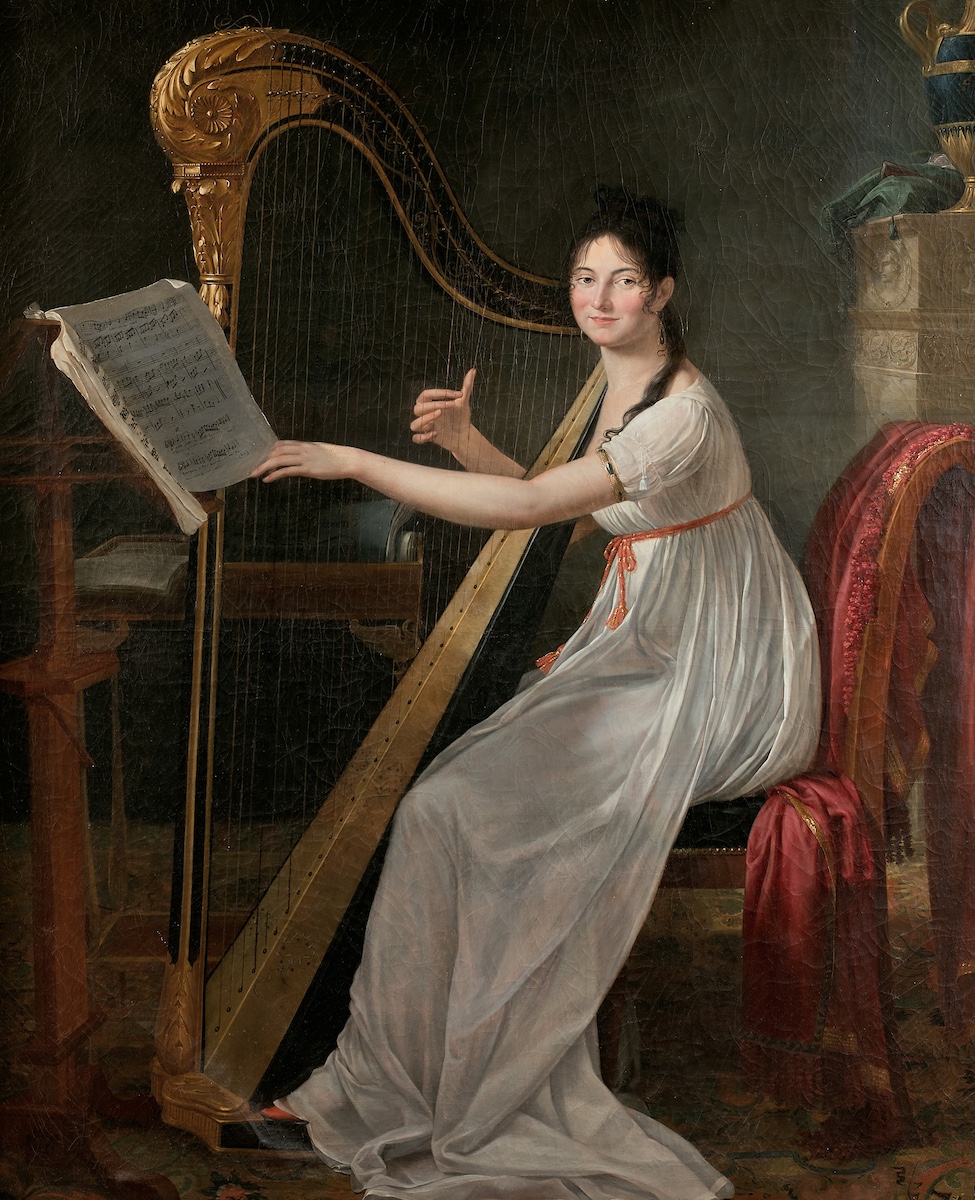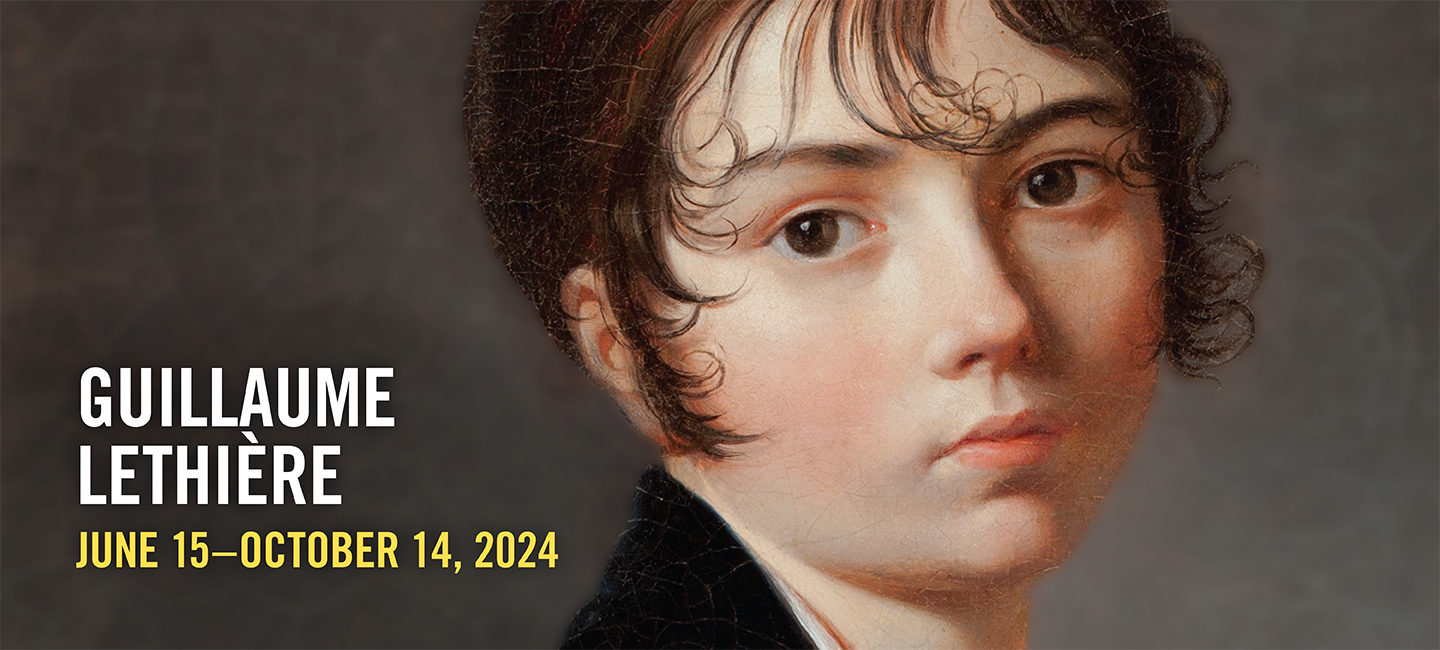Return to Paris
 Guillaume Lethière, Portrait of Adèle Papin Playing the Harp, c. 1799, oil on canvas. Carnegie Museum of Art, Pittsburgh, Heinz Family Fund, 2023.17. Photo: Studio Sebert for Tajan
Guillaume Lethière, Portrait of Adèle Papin Playing the Harp, c. 1799, oil on canvas. Carnegie Museum of Art, Pittsburgh, Heinz Family Fund, 2023.17. Photo: Studio Sebert for TajanUpon Lethière’s return to Paris from Rome in 1792, he embarked upon a generative decade of artistic production—exhibiting history paintings and portraits regularly in the Salon to critical success. The Salon, an annual public exhibition originally organized by the Académie royale de peinture et sculpture (Royal Academy of Painting and Sculpture), was opened to all artists for the first time during the French Revolution. Indeed, this period was rife with societal changes at every level: the king and queen of France were publicly executed, the monarchy was abolished and the French Republic was born, and slavery was abolished in French colonies. In 1795, the French Directory, a governing body composed of five directors, was established. Despite the political turmoil, Lethière’s career took flight. He established an active studio on the rue de Childebert in the Saint-Germain-des-Prés neighborhood in Paris and became one of the most prominent artists of the period. In 1799, amid a series of successful exhibitions and commissions, Lethière would finally be legally recognized by his father, Pierre Guillon. In a moving letter from father to son, Guillon writes:
This document is a declaration to you, my friend, of the certainty of my paternity and my desire to pass on my name and property to [you].
